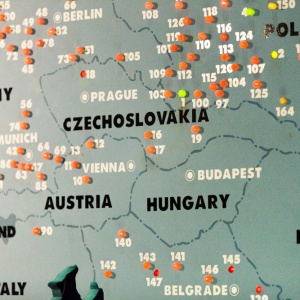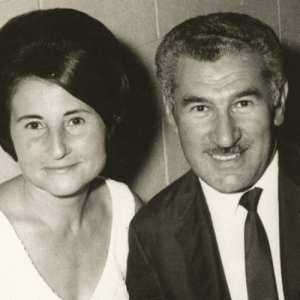Blog
May 2, 2016
The Complexity of the Camp System

Previous Museum Camp Map – Sydney Jewish Museum
What do you do when approached to provide the research for a state-of-the-art interactive on the camp system for Sydney’s new Holocaust exhibition? If you’re anything like me, you feel honoured and humbled. Perhaps you also feel a little apprehensive about the task – but, naively, not overly so. After all, how many camps could there have been? Just how complex could this terrible system assembled by the Nazis be?
The answer to this last question, as it turns out, is infinitely. Between the many different kinds of camps, spread across Europe and North Africa; between the subcamps and satellite camps; from the sprawling complexes to the tiny work outposts; from Dachau, which lasted the 12 years of Nazi rule, to barns where inmates on the move spent only a few nights – the camp system now seems to me an endless organic terror. One could spend a lifetime studying it and not want for material.
One thing about the work that surprised me was the breadth of the camp system’s reach – just how many lives it has touched. On a recent trip to Perth to visit my boyfriend’s family, I spent an afternoon talking with his Nonno, who spent a year in Nazi POW camps during the Second World War. Emilio drew me a map of the camps he was incarcerated in and the factories where he worked, recounting as many details as he could remember. Upon returning to Sydney, I was able to track down the camps Emilio named or drew, and feed my research back to the family, who were moved to receive it.
I think you would be hard pressed to find someone whose life has not been affected to some degree by this terrible chapter of human history.
Author – Sarah Haid, Researcher






What’s On Newsletter
Keep up to date on all Museum events and exhibitions.